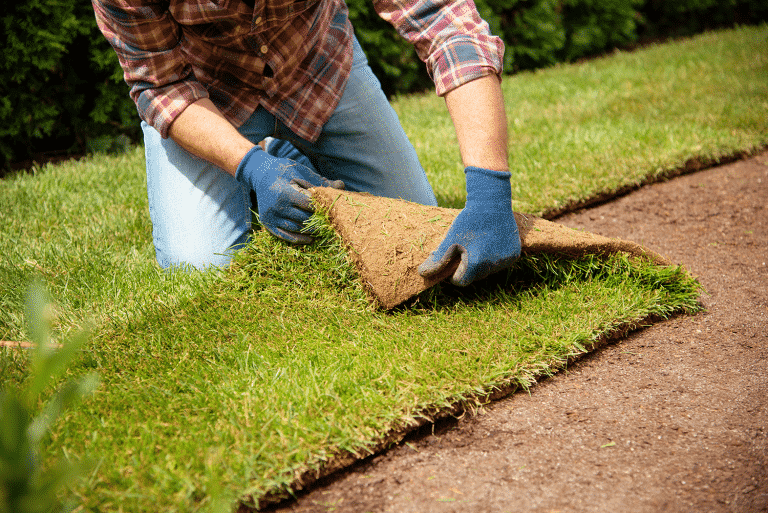Laying sod is much quicker than growing a lawn from grass seed. But it’s important to have all your yard preparation work done before the sod delivery arrives.
After sod is installed, roll it lightly to remove air pockets and promote firmness. It’s best to do this in the morning before sod becomes muddy. Keep new sod moist with a daily watering schedule for the first week.
Soil Preparation
A sod project can be a large undertaking and requires planning. If you are tackling the project yourself, plan for at least one weekend to prepare the soil and another for sodding installation
The first step in preparing for sod is to do a soil test to determine the pH, mineral content and other information critical for a healthy lawn. Having the soil tested also helps to identify any nutrient deficiencies or excesses, so you can correct them with fertilizer and other amendments.
Till the soil a couple inches deep, adding any needed amendments such as lime or gypsum. It’s important to work these ingredients into the soil thoroughly, as they will be the first food for new sod roots. Add a starter fertilizer (high in phosphorus) to the soil, following the application rate recommended on the product label.
Preparing the Area
Before sodding, clear the area of debris, brush and weeds. On the day of sodding, ask a friend for help as sod can be heavy and difficult to move around. If possible, start with the longest straight edge in your yard, such as a fence line. Dampen the soil to help it retain moisture as you unroll the sod. Test your new soil, if needed, with a soil testing kit to ensure that it has an ideal pH and mineral levels for healthy grass growth.
If the weather is nice, use a lawn roller to settle and fill in low spots. Water the entire area several times a day until the sod has taken root. Once the sod has taken root, water it less frequently, but deeply. Maintain this pattern for 10 to 14 days until the sod has established. This will help your new lawn become a strong part of the landscape. This preparation also helps you avoid the time and expense of trying to grow a lawn from seed.
Laying the Sod
Ideally, sod should be laid soon after it’s delivered. Keep in mind that sod isn’t the same as turf grass; it’s a living, breathing thing and will deteriorate quickly when left unattended.
The best time to lay sod is early spring or fall. Cool temperatures and rainfall help the sod establish quickly, while weeds are less likely to take hold.
If you have a sloped yard, lay your sod perpendicular to it rather than across it, as this will give the sod a larger surface area to grip the soil and prevent it from shifting during rainfall. If necessary, use sod staples for extra security.
When you’re ready to install, dampen the sod and use a roller to compact the topsoil and revealing any low areas that need attention. Avoid walking on your new sod until it’s rooted, and water the sod deeply daily (multiple times a day during dry periods) for 10 to 14 days.
